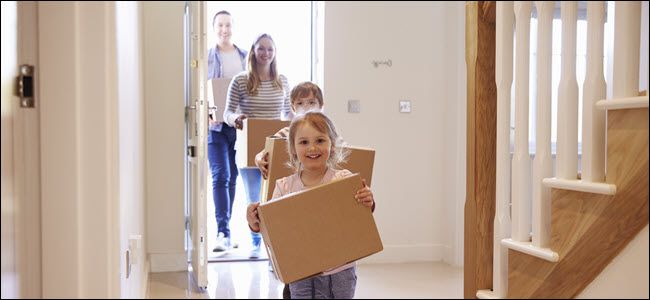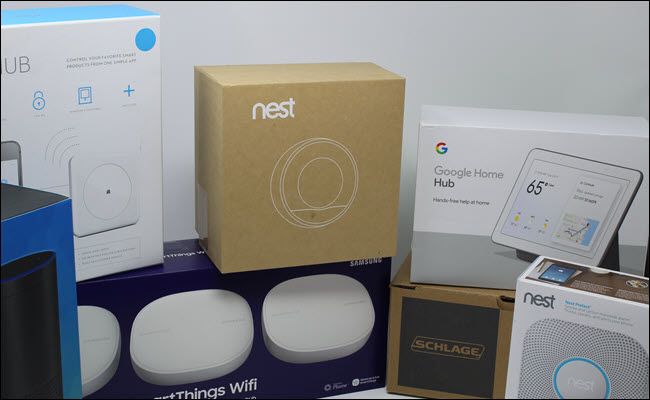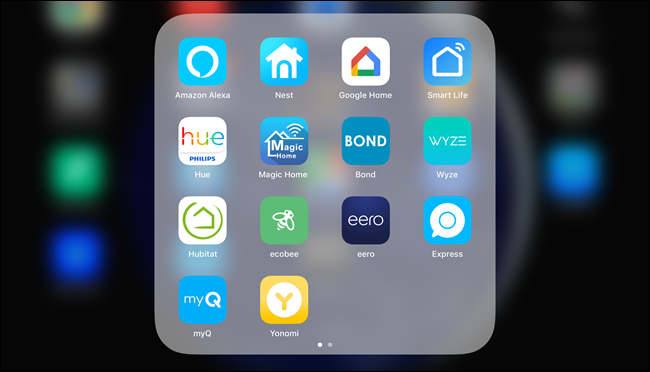Quick Links
You might think a smarthome sounds terrific. But what about your family? They'll have to live with the gadgets, too. And it's a lot easier to set up a smarthome if everyone loves the tech as much as you do.
Gauge Your Family's Feelings
If you haven't set up a smarthome yet, or if you have, but you're considering adding more tech, you should start by checking in with your family. You might be gung-ho, but if your family is wary or intimidated, consider pausing your plans and finding out why. They may have legitimate concerns you haven't considered and will want to address. Remember, if you want your family to take your smarthome plans seriously, you need to take their concerns just as seriously and work to address them.
While you have your family's ear, it's time to start talking about what type of smarthome devices you are considering adding to the home. Explain what the different gadgets are, what they do, and what the potential benefits are. Gauge their interest in each device to help you decide where to start.
And remember, the best benefits aren't always the most obvious, so walk through those. Smart bulbs may not sound that interesting until you point out the "what else" they can do beyond easy on and off control.
This makes all the difference. Here at How-To Geek, one of us convinced a family member to love smarthome tech by showing them that a smart bulb in the bathroom could automatically switch to 15% brightness and a red color at night. The idea of not being blinded late at night should be appealing to nearly anyone.
I also convinced my mother-in-law on the benefits of smarthome gadgets by adding a smart lock before any other device. The smart lock meant we could give her an easy code to remember (which made her happy) but one we could monitor, or even block (which made us happy). It's easier to revoke a digital code than a physical key. Most importantly, it started the normalization process of a home powered by smart gadgets.
If a particular smarthome promise excites a family member, add that to the shortlist of gadgets to implement first.
Start With Unobtrusive Devices
We think video doorbells are one of the best smarthome devices you can own, and we've discussed at length the various Wi-Fi cameras you can sprinkle throughout the home. But just because a smarthome gadget is great doesn't necessarily mean it's the first thing you should install. Cameras can be offputting to say the least, as can presence sensors and other tools for automation.
Your goal is to ease your family into the smarthome, so you should start with devices that they choose to use and control. Smart locks, smart plugs, smart lights, and a well-placed voice assistant are an excellent place to start.
While voice assistants are always listening, you can avoid some of the "creepy factor" by starting with just one Echo or Google Home and placing it in a shared room, like the living room. Avoid places that feel private like bedrooms. Even though voice assistants are a little more obtrusive, they are essential to make your smarthome accessible, so we still recommend them.
Make It Easy to Use
Smarthomes work best when they are easy for everyone to use, family included. Unfortunately, without planning, they can quickly become complicated and frustrating. Even if you only have smart bulbs, if it's hard to remember what app to use or what command to say, no one will use them.
To that extent, as much as possible, you should try to set up your smarthome for single app control. By running all the commands through one app, you can install just that app on your family's phones, and they won't need to second-guess what to use.
Voice commands, through Alexa or Google Assistant, are incredibly useful as they avoid the need for using an app at all. That's especially useful for your younger family members who may not have a smartphone or tablet.
But rather than asking them to remember what to call the lights in a particular room, make sure to name and group your devices for easy voice control. With groups, your family may not even need to remember names, in at least some rooms they'll be able to say "turn off the lights," and that will work.
Cut down on what they have to remember, and your family is more likely to use your smarthome gadgets.
Teach Them How to Use It
Now that you have the hard work of convincing your family and crafting an easy to use smarthome completed, it's time for the final step---teaching your family how to use the smarthome.
Again, consider starting in a single room and demonstrate the features. Start with the easiest aspects, like turning off the lights by voice. Introduce new concepts slowly to avoid overwhelming with too much information.
And consider making "cheat sheet" posters and hanging them in each room that has smarthome devices. List a few voice commands they may find useful. Do you have extended family member coming over who insists on cooking? Show them how timers work on your voice assistant, and post a sign with the timer commands. The idea is to make using the smarthome tech seem normal.
Reinforce the lessons by using the smarthome in your day-to-day activities. The more your family sees you control the home by voice or app, the more they'll remember that's a possibility.
Keep Your Family Happy
After everything is up and running, keep an eye out for what isn't working. If your family doesn't ever interact with a smarthome gadget, investigate why. Try to determine if they don't understand the device, or if they don't like it. Educate where needed, but when a family member understands the ins and outs of a smarthome feature and still don't use it, strive to understand the why. You may need to reconsider the implementation to make your smarthome more useful to your family.
Crafting a smarthome that the entire family loves is a lot of work, but ultimately it's that family acceptance factor that determines if your smarthome will last. Without it, you may find yourself unable to justify the extra expense of smarthome controls only you use.



